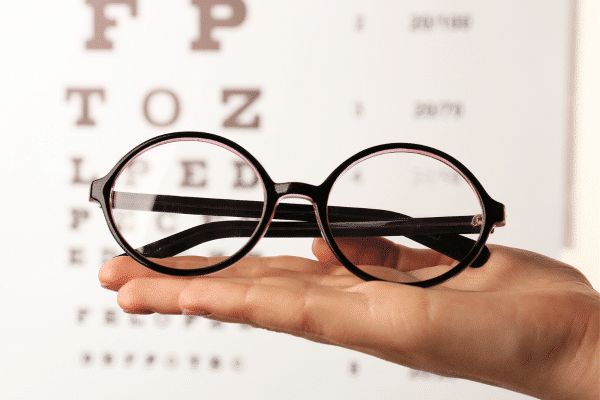According to available data, more than half of Poles over the age of 18 have a visual defect. In most cases, glasses or contact lenses are sufficient for normal functioning, but sometimes the problem is much more serious. When a visual defect makes normal life difficult or impossible, a patient can apply for a disability certificate. What eye defects qualify for a disability rating?
According to current statistics, more than 500,000 people in Poland are suffering from severe vision impairment. Worldwide figures report that significant visual impairment affects 1% of the population, and the total number of visually impaired and blind people continues to grow. This involves a number of factors. One of them is the aging population and visual impairment due to age.
Causes of vision problems
There are many eye diseases that go untreated, can lead to serious vision problems and even blindness. These include:
- Cataract - causes partial or complete clouding of the lens and reduced visual acuity.
- Glaucoma - leads to damage to the optic nerve and loss of visual function,
- High myopia (including degenerative myopia, so called pathological myopia, which causes retinal changes) - is characterized by impaired vision both far and near.
- Macular degeneration (AMD) - leads to, among other things: decreased vision, distorted vision and, in its exudative form, is one of the most common causes of adult blindness worldwide. Dry AMD, on the other hand, causes central glare (the patient can see, but only with the periphery of the retina).
- Retinopathy of prematurity (ROP) - develops in babies born prematurely. Of the 5 stages of the disease, the last one causes complete retinal detachment and no vision. ROP can occur simultaneously with refractive defects, strabismus, glaucoma and low vision.
- Visual impairment of the eye - most often occurs as a consequence of an uncorrected visual defect or strabismus. Visual impairment of the eye can also occur without an organic cause. Neglected eye blindness can lead to to disability.
Significantly damaged eyesight can also be the result of an accident, cancer, diabetes, infectious diseases and many others.
The population of people facing serious vision problems varies widely by level of visual dysfunction. Some patients, because of the strongly perceived impediments to their lives, may apply for visual disability.
What visual impairment qualifies for a disability certificate?
Many people with serious vision problems hindering their daily lives are looking for information on what kind of vision defect qualifies for disability and from how many diopters do we say disability?
Well, according to Polish regulations, there are 3 degrees of disability:
- Severe disability - applies to people with total binocular blindness or practical binocular blindness. Visual acuity after correction in the better eye does not exceed 5% of normal acuity. The field of view is narrowed to about 20 degrees - telescope vision.
- Moderate disability - applies to people whose post-correction visual acuity in the better eye is between 6% and 10% of normal acuity, and patients with a narrowed visual field of about 30 degrees.
- Light degree of disability - applies to people with binaural lenslessness, monocular people and people whose visual acuity in the better eye after lens correction does not exceed 25% of normal acuity. Such patients are not legally considered blind.
When determining degrees of visual disability, other factors are also taken into account. For example, if a patient is at risk of retinal detachment, and thus vision loss or significant deterioration, he or she is qualified for a higher degree of disability, even if current visual acuity and field of vision are better than the specified range.
Other diseases, such as progressive retinal pigmentary degeneration, also play a role in raising the degree of visual disability.
How to get a disability certificate?
In order to obtain a disability certificate, you must apply to the district disability evaluation team in your place of residence. There you can find out what documents you need to submit to apply for the ruling.
Usually these are:
- application for a disability certificate - is issued by the Disability Assessment Team,
- Medical certificate of health - is issued by the Disability Assessment Team,
- Documentation confirming the state of health - all test results, hospital discharges, etc., which may affect the determination of disability.
If the patient presents photocopies of documents to the commission, originals will be necessary for review.
Depending on the degree of visual disability obtained, the patient is entitled to various benefits, allowances and entitlements. These may include, for example: special conditions of employment, care benefits, subsidies in case of elimination of architectural barriers in the home, social services, therapeutic services, tax benefits, discounts on public transportation. It is advisable to inquire about your privileges at the relevant institutions, including. welfare center, city hall, labor office, tax office, post office, etc.
Can visual impairment be reduced?
Despite the aforementioned facilities for people with disabilities, however, the best way to live a comfortable social and professional life is to take care of your eyesight and try to treat even serious conditions.
To this end, it is advisable to use proven medical facilities and experienced specialists. One such place isVoigtEye Clinic in Krakow. Patients with serious vision defects and eye diseases can visit here. The treatments offered will help prevent visual disability. Modern equipment and experienced staff of ophthalmologists and optometrists means a greater chance of success of the therapies used.One of the popular and effective methods used in the Krakow clinic is, among others,treatment of myopia by orthocorrection. You can see the full range of treatments on our website.

